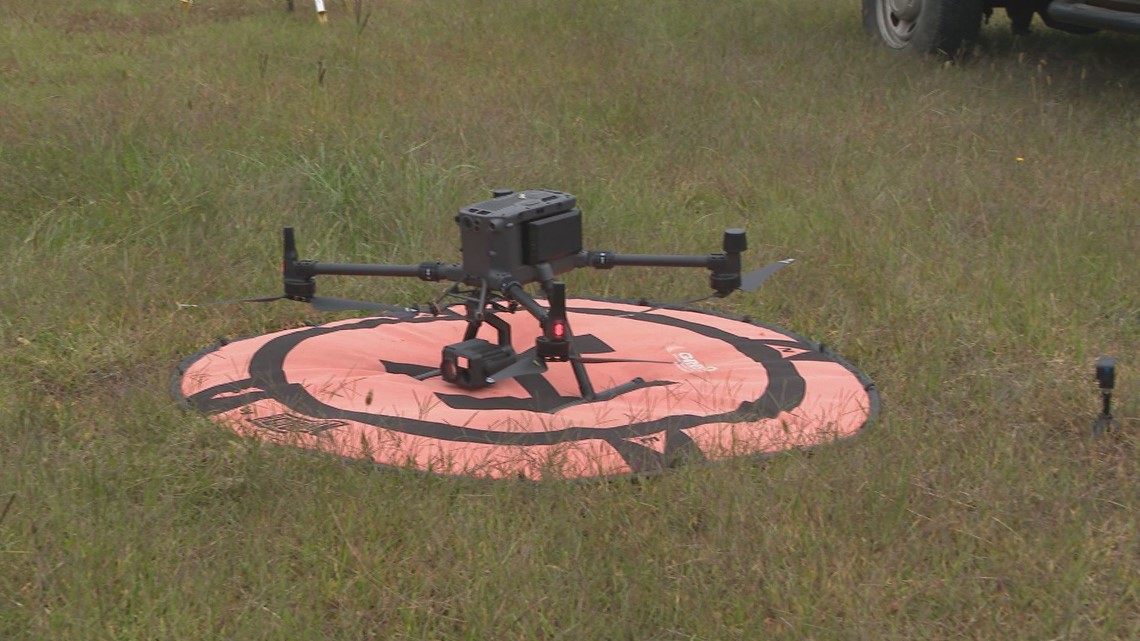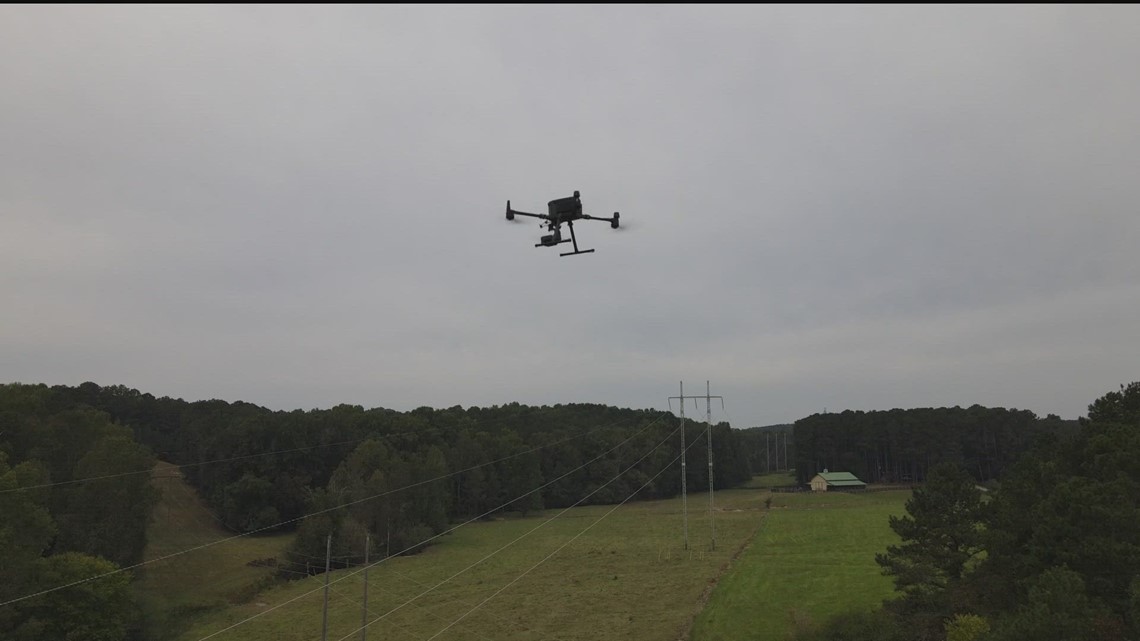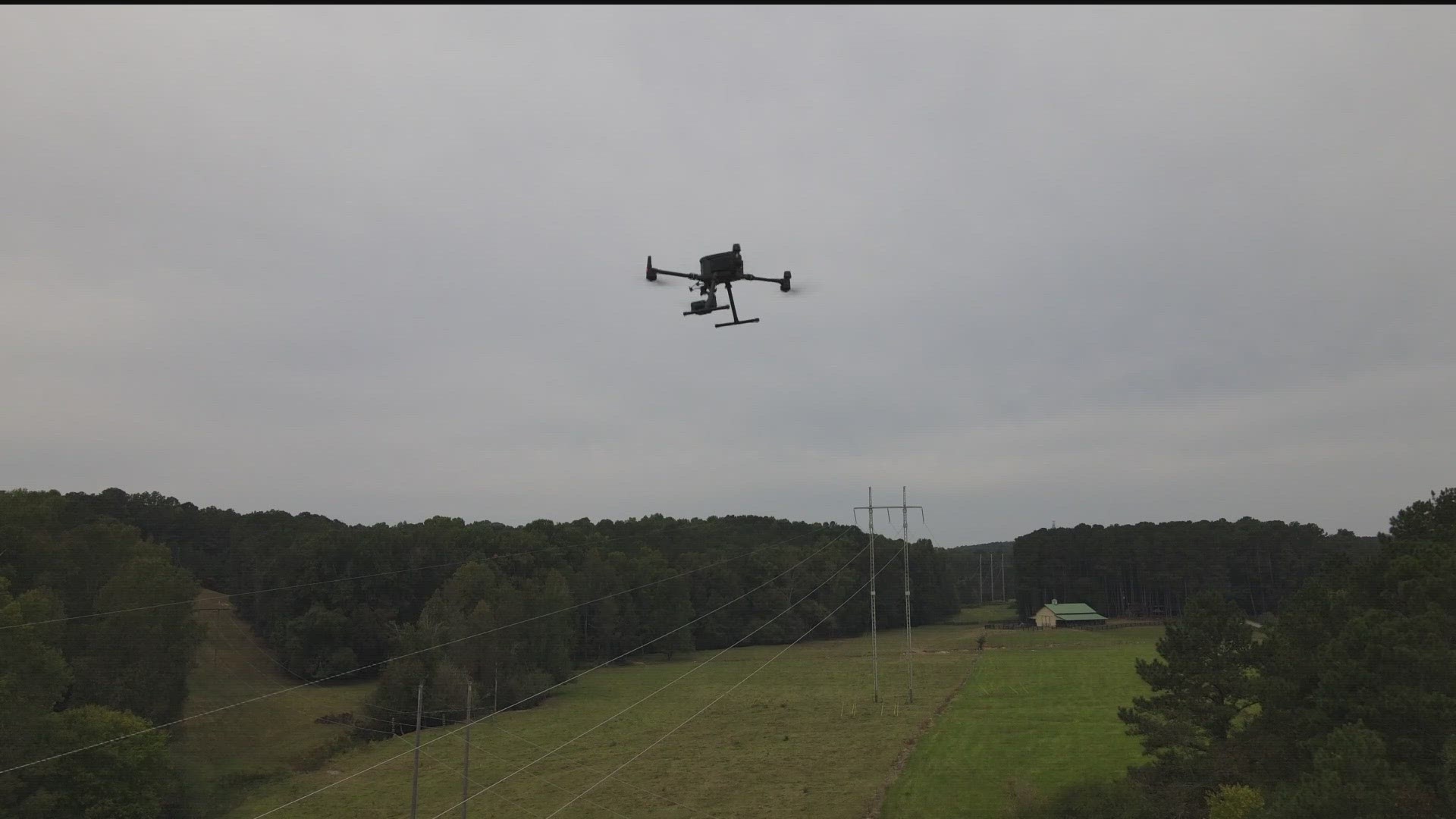ATLANTA — Even when we have quiet weather stretches, Georgia Power doesn't stop working to keep the lights on.
In the last few years, they have been pushing the use of more advanced technology to keep the power grid more resilient.
Drones, or Unmanned Aerial Vehicles, are sent up to inspect transmission lines and substations across the state. They do this to make sure they catch any deteriorating or degraded conditions that could have been brought on by lightning strikes and storms or even environmental causes like acidic bird poop.
Nick Howell is one of those drone pilots and has been with Georgia Power for more than 20 years.
"You could find a lot of rotten poles which could break during a high wind event," Howell said. "What we're looking at is to make sure that everything is in good condition on the towers to withstand any kind of weather event."
On this mild October day, the senior line inspection specialist is flying his drone along miles of transmission lines in one of Atlanta's northern suburbs and the nearby substation. As Howell flies along the lines, his mission is to look for damage that could lead to a disruption of power distribution.
Along the line, he stops the drone at every main pole and substation, taking special high-resolution photos. The detailed photos are taken from multiple angles. At the substations, he also uses an infrared camera to take additional photos that can detect hot spots, a sign that would mean a more urgent issue to fix.


The photos are compiled into a catalog. Should a destructive storm strike, like a major hurricane, these photos would serve as a comparison point of what needs to be done to restore power.
"And then that (the photos) allows us to be able to see how the structure looks like even before we go out there to perform work on it. So we can better tell what kind of equipment we need to bring out to perform the work," Howell added.
Howell has seen it all -- from summer storms to winter freezing rain events. But the biggest storm response engrained in his memory:
“Hurricane Katrina... I’ve never seen such damage in my life. It was just such a devastating event. Steel structures were crumpled up on the ground."
He was stationed in Pascagoula, Mississippi, for two weeks and worked to restore power to critical infrastructure like the local hospital. Ninety percent of the city had been covered in storm surge. It’s events like that that keep Howell focused on the company’s mission. He wants to ensure the power infrastructure is as reliable as possible when that next storm hits.
This advancement in drone technology was an easy decision for Georgia Power. Before drones, they’d use helicopters to glance at the power infrastructure and climb towers to get a more detailed look at each connector piece. But drones mean a more complete, detailed catalog -- that is done at a lower cost, more energy efficiency, and one that’s better for the nearby wildlife.


On average, each area of Georgia Power's region is surveyed every six years.
In addition to quiet weather missions, Georgia Power uses drones after weather events. They frequently use drones after a big storm event to examine power lines that they cannot access. After Hurricane Maria in 2017, they even went to Puerto Rico and used drones to help carry wire up a mountain... all to restore the power quicker.

